4.1 + 4.2 Energy, Producers, and Consumers & Energy Flow in Ecosystems >
Ecological Pyramids
Living things require energy to survive, we know this because, for this very reason, we eat meals every day. Energy is what powers living organisms, so how do we get it? Living beings cannot produce and create energy on their own, but plants or algae are able to use the sun’s energy to create energy-rich matter. Consumers/heterotrophs such as ourselves rely on these primary producers to harness energy from the environment. We can either obtain this energy by directly eating primary producers (plants), or by eating animals. 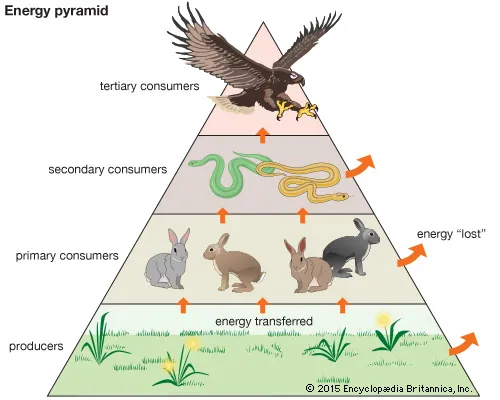
Energy flow between organisms is shown above. As energy moves up each trophic level, about 90% of energy is lost because it is used for life processes.
There are different pyramids in ecology to demonstrate the different factors of animals in a community:
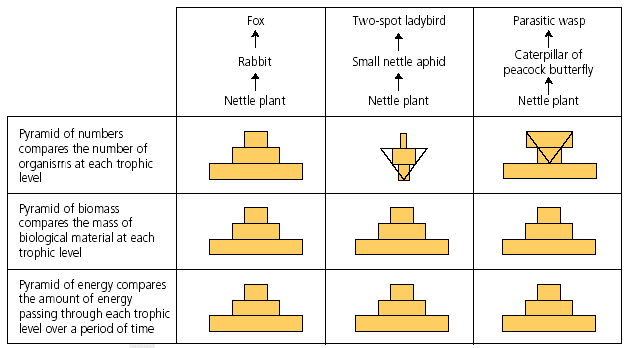
Number Pyramid- Displays the population of individual organisms at each trophic level 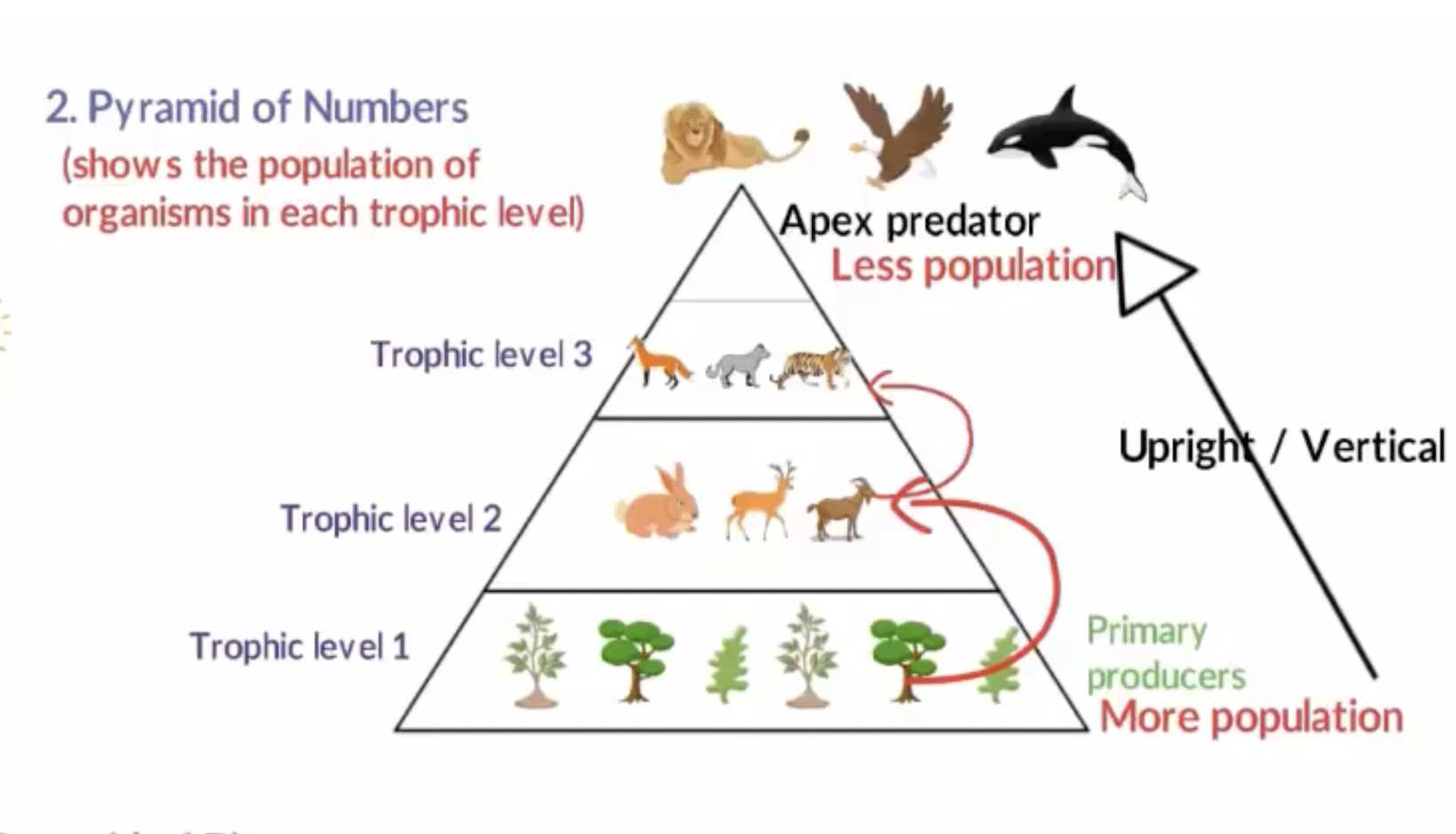
Biomass pyramid- Shows the weight of different organisms at each trophic level
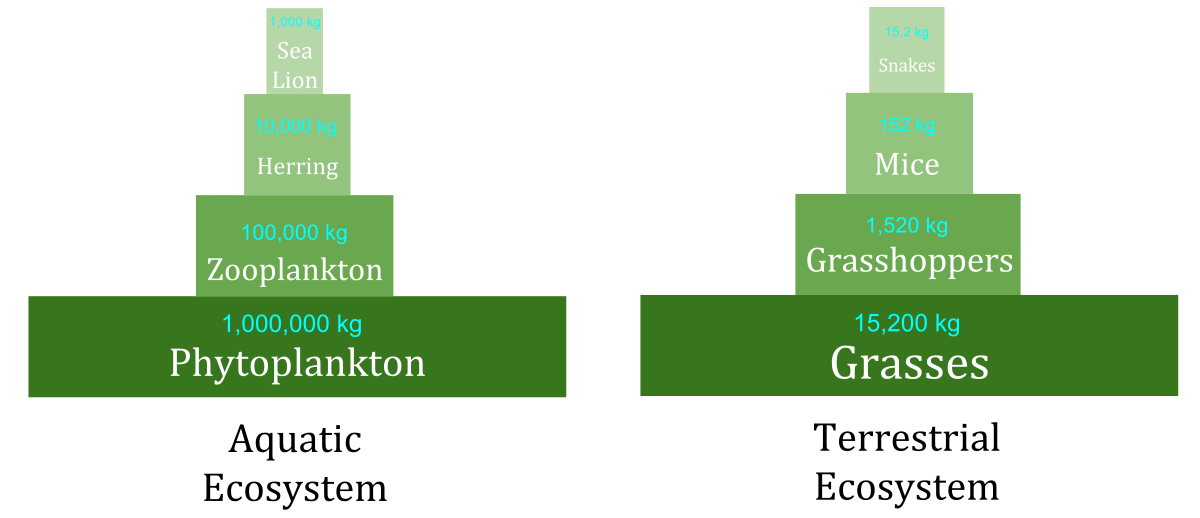
Vocabulary
Autotrophs- These organisms are able to get energy from nonliving sources and convert them into usable energy for living beings
Primary Producer- Primary Producers are how energy enters food webs and are the first producers of energy-rich organic matter.
Photosynthesis- The process where plants utilize solar energy to convert carbon dioxide and water into sugars/starches.
Chemosynthesis- Similar to photosynthesis, chemosynthesis is when chemical energy is harnessed to create carbohydrates. This can be used in places where sunlight cannot reach, such as deeper places in the ocean. (For example- In the dark depths of the Pacific Ocean, there are ecosystems that are powered by chemosynthesis. The chemosynthetic bacteria survived and gained energy using this process, where they took the chemical energy from volcanic vents, and this same energy was also passed on to other living organisms in the ecosystem).
Heterotrophs- These organisms cannot directly obtain energy from the environment, so they get it from other organisms (typically by consumption).
Consumer- Another name for Heterotrophs; these organisms are unable to make their own energy
Carnivores- They kill and consume other animals to survive (ex- dogs, cats)
Scavengers- As the name suggests, these animals look for dead carcasses to consume (ex- vulture)
Herbivores- diet is made up of plants (ex -cows, caterpillars, deer)
Omnivores- These organisms consume both plants and animals (ex- humans, bears, pigs)
Decomposers- These organisms feed by breaking down organic matter (ex- bacteria, fungi)
Detritus- Dead/decaying plant/animal remains
Detritivores- consume detritus to obtain nutrients/energy
Note- Some animals may fit into more than one category. For example, hyenas are typically known as carnivores, but they will also look for dead animal carcasses as their meal.
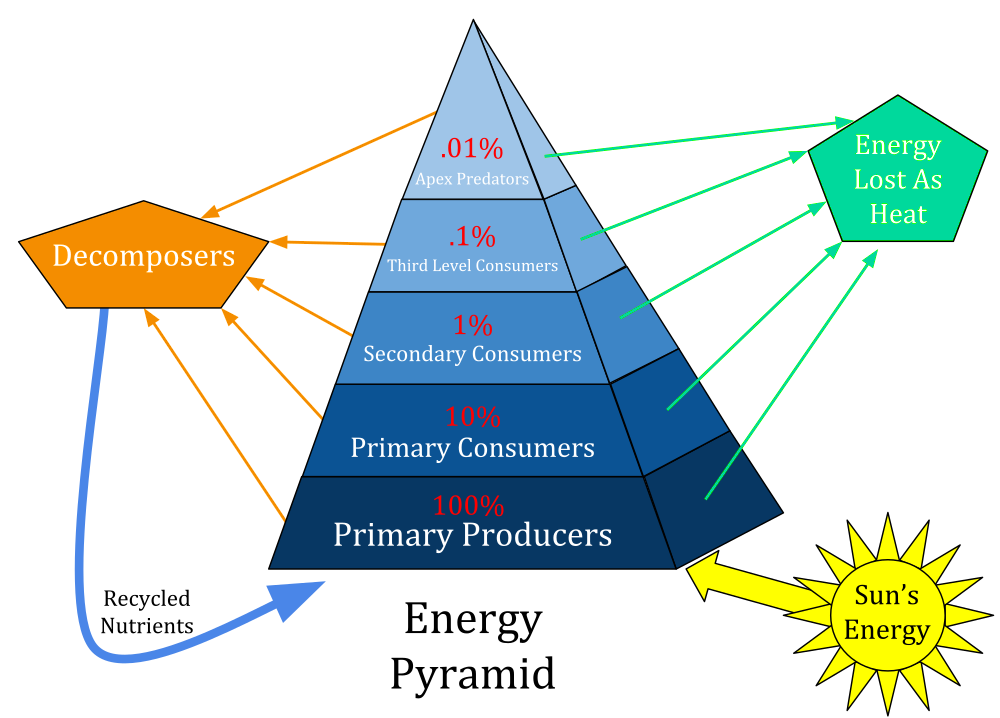
4.2 Food Chains and Food Webs
The producers and consumers of every ecosystem form different feeding relationships, and energy moves from the prey to the predator. This flow can be demonstrated as food chains and food webs.
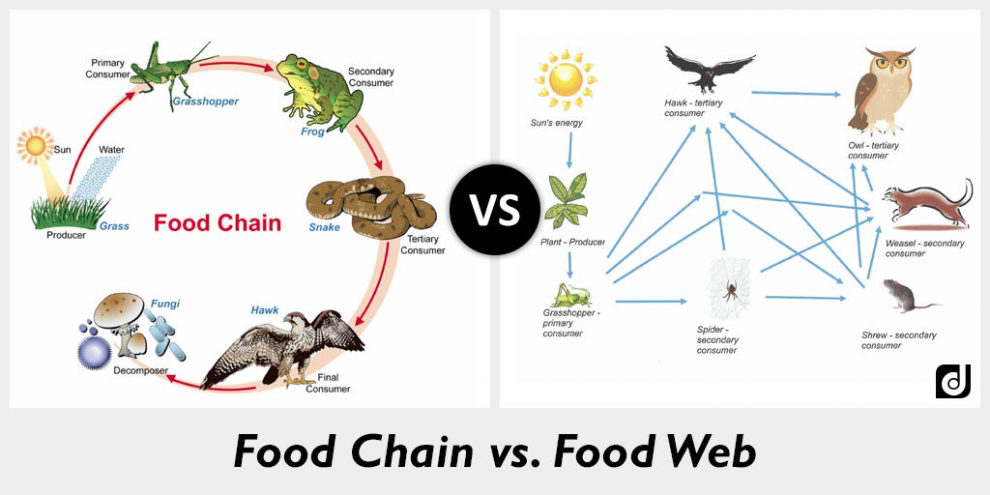
A food chain is built up of a series of steps where each organism transfers energy to another. A food chain is much more simple than a food web, a more complex network of feeding relationships between organisms. While a food chain shows the relationship of only a few organisms, a food web can show many because animals typically have a more diverse diet, that is not limited to a single animal. To see how complicated a food web can be, you can observe the various food chains found in a single food web. Due to a food web’s intricate nature, it can be difficult to predict what will happen in the case of a disturbance.